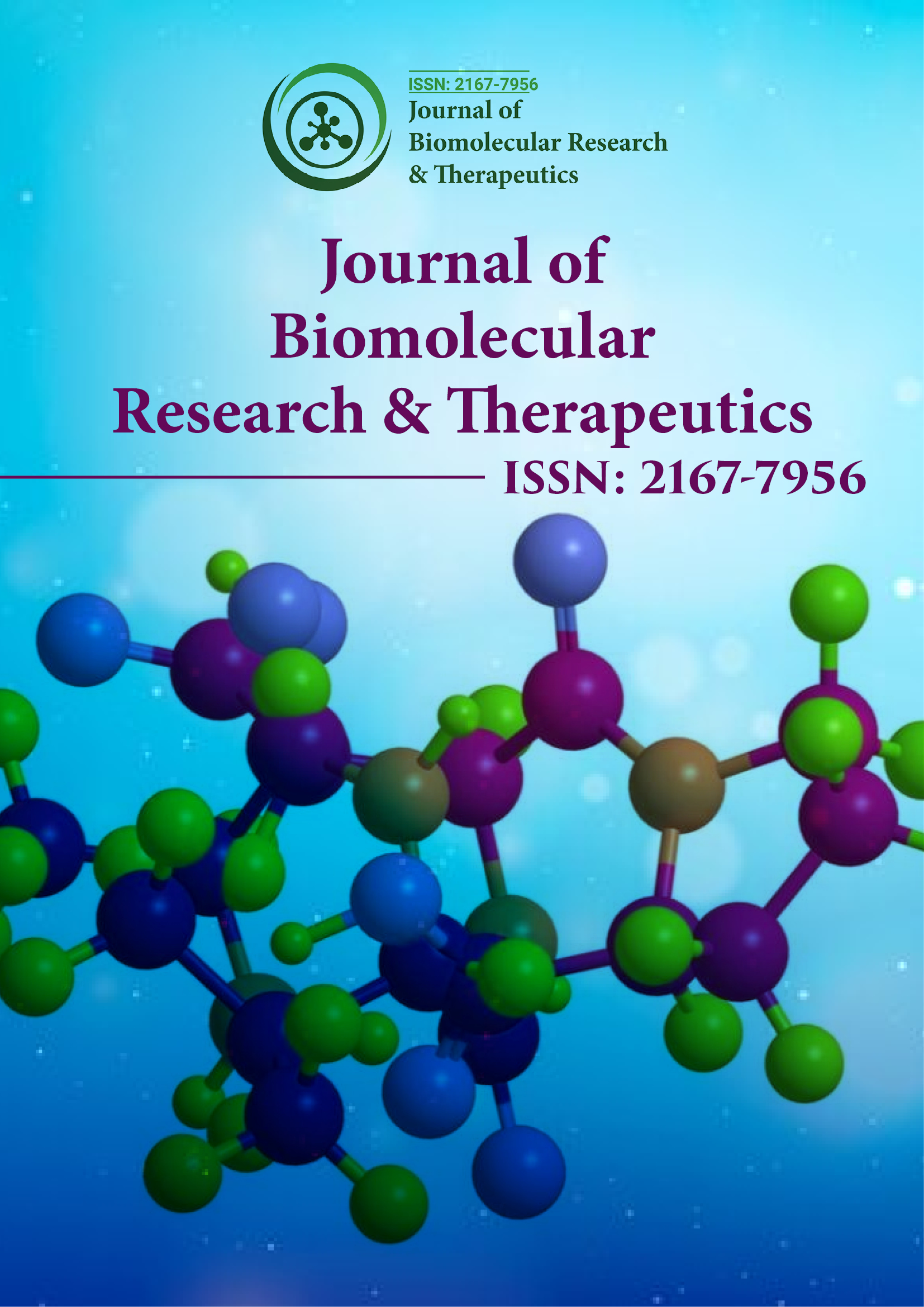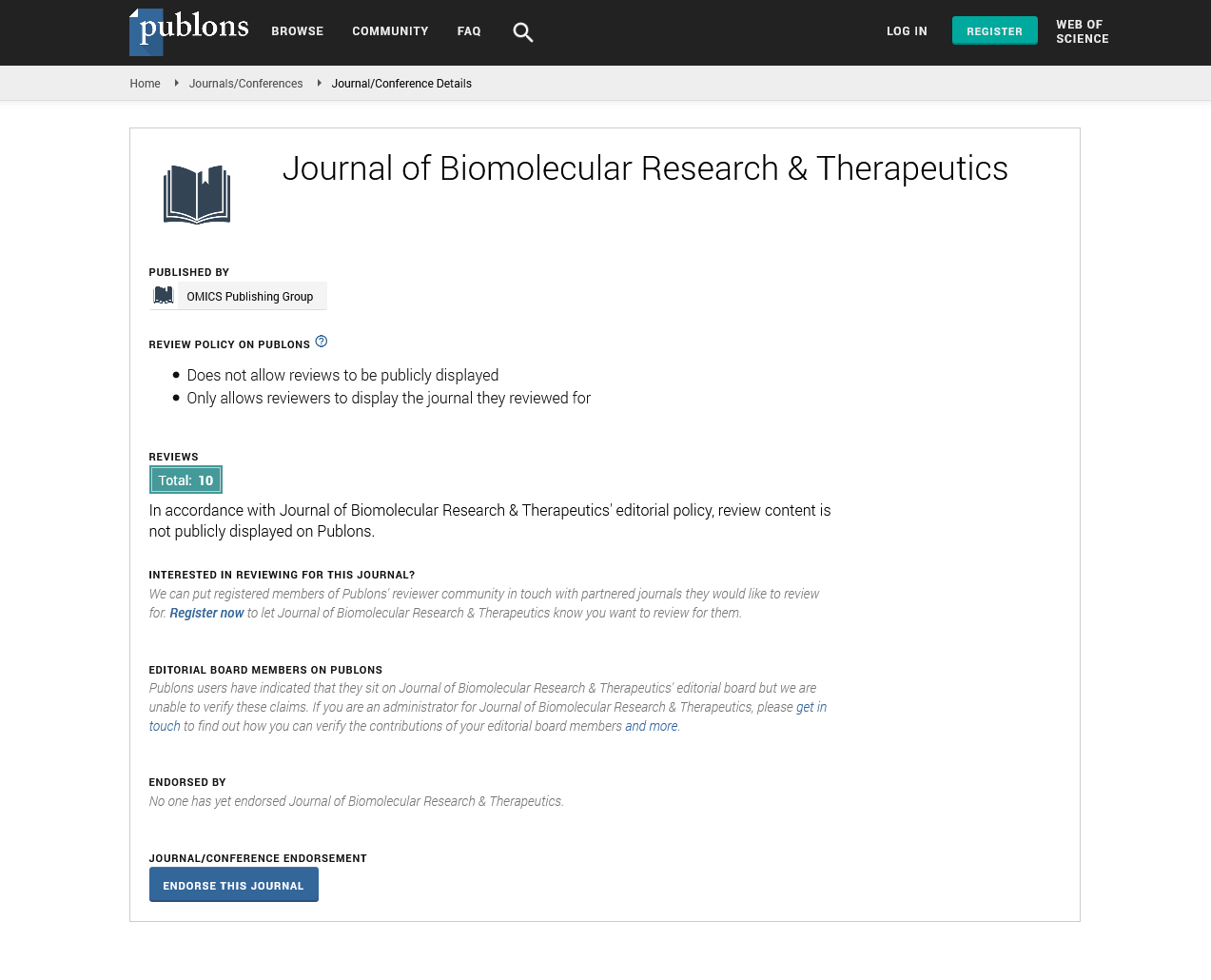Indexed In
- Open J Gate
- Genamics JournalSeek
- ResearchBible
- Electronic Journals Library
- RefSeek
- Hamdard University
- EBSCO A-Z
- OCLC- WorldCat
- SWB online catalog
- Virtual Library of Biology (vifabio)
- Publons
- Euro Pub
- Google Scholar
Useful Links
Share This Page
Journal Flyer

Open Access Journals
- Agri and Aquaculture
- Biochemistry
- Bioinformatics & Systems Biology
- Business & Management
- Chemistry
- Clinical Sciences
- Engineering
- Food & Nutrition
- General Science
- Genetics & Molecular Biology
- Immunology & Microbiology
- Medical Sciences
- Neuroscience & Psychology
- Nursing & Health Care
- Pharmaceutical Sciences
Perspective - (2022) Volume 11, Issue 4
Biomolecular Screening Techniques
John Ray*Received: 01-Apr-2022, Manuscript No. BOM-22-16516; Editor assigned: 04-Apr-2022, Pre QC No. BOM-22-16516(PQ); Reviewed: 18-Apr-2022, QC No. BOM-22-16516; Revised: 25-Apr-2022, Manuscript No. BOM-22-16516(R); Published: 02-May-2022, DOI: 10.35248/2167-7956.22.11.208
Description
Biomolecular screening covers a wide range of biological and biochemical screening approaches in the search for new drugs. This usually involves the use of cells, chemistry, genomics, and proteomics in one or more aspects of the screening assay. Biomolecular screening can be applied in multiple assay formats at different screening levels. The current challenge for biomolecular screening includes biochemical or cell-based, is to transform a wealth of genomic data and hundreds of potential disease-targeting proteins into new therapeutic leads. The industry needs technology that better characterizes targets, allows more careful selection of subsequent screening approaches, and supports the screening of new targets.
Cell Technologies provides aptamer technology to support customers in target validation and drug discovery, aptamers not only bind to the target, but also they target to the functional drug-like inhibitor, helping to target protein-level targeted validation approaches and complementing RNA validation technology. Aptamers are used to identify functionally equivalent small molecule lead compounds. It can be turned into a drug in itself, providing a unique advantage in bridging target validation and drug discovery. This approach investigates highly deregulated genes identified in human tissues. Parallel computational analysis selects a target subset with characteristics expected of an effective and safe treatment. These target subsets are further investigated for protein expression profiles, protein structure is determined at atomic resolution, function is assessed using in vitro and in vivo models, and small molecules that bind to specific targets use high-throughput aptamers will be screened identified based assay. The resulting leads are optimized by structural analysis of the target complexed with the bound molecule.
This technology is applied in three key areas profiling and screening of cell signaling pathways, protein expression analysis, and research on protein and protein interactions such as GPCRs. This technique allows us to measure translocations directly, enabling faster assays that are independent of transcriptionally active targets. Other benefits include independence from antibodies or fluorescent proteins to measure target activity, and the ability to probe proteins expressed at very low levels by signal amplification schemes.
Biomolecular simulations are routinely used in biochemistry and molecular biology research. However, the impact on the pharmaceutical and biotechnology industries is often below expectations. This is because it takes a lot of computer time to simulate a short episode in the life of a biomolecule. Several approaches have been developed to overcome this obstacle, such as massively parallel and specialized computing and the use of unconventional hardware. The methodological approach is represented by a coarse-grained model and an improved sampling method. These techniques can show how the system under investigation behaves on a long time scale based on relatively short simulations. This review provides an overview of new simulation approaches, the theory behind improved sampling methods, and success stories for those applications that have a direct impact on biotechnology and drug design.
Regulated chemical modifications such as methylation, acetylation, and phosphorylation of various biopolymers such as proteins, RNA, and DNA are crucial for all aspects of biology. Abnormal modifications and associated enzymes are attractive therapeutic targets. However, still there is a shortage of efficient high-throughput screening assays that are generally applicable to drug discovery that regulates these enzymes. These modifications are often recognized by specific effector proteins.
Citation: Ray J (2022) Biomolecular Screening Techniques. J Biol Res Ther. 11:208.
Copyright: © 2022 Ray J. This is an open access article distributed under the terms of the Creative Commons Attribution License, which permits unrestricted use, distribution, and reproduction in any medium, provided the original author and source are credited.

